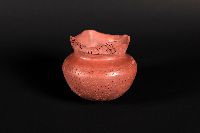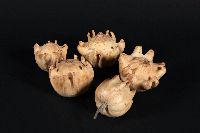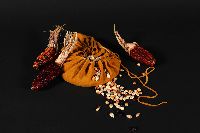Home > To Make Things Clear > The Iroquoians - To Make Things Clear
The Iroquoians
Among the First Nations of eastern Canada the best known Iroquoian groups are the Wendat and the Iroquois. The Iroquoians could be found where the temperature and arable land made horticulture possible. They lived along the Great Lakes in Ontario and in the Saint Lawrence Valley.
These groups established themselves in a location for roughly fifteen years. They moved their village when resources started to become scarce. Eventually the soil no longer provided enough minerals for the plants that they grew, and they had to travel farther and farther to get firewood. Since they did not move their villages on a regular basis, we call them semi-sedentary.
Their traditional dwelling was the longhouse. It bore its name well, measuring about 30 metres in length. Some were over 50 metres long! The length of a longhouse depended on the number of people who lived in it. Each longhouse was home to a clan, which meant, on average, between sixty and eighty people. A large Iroquoian village could have as many as 2,000 inhabitants, but smaller ones only had about a hundred.
The plants that they grew outside the palisades surrounding the village provided 80% of their food supply. The 3 sisters (corn, squash and beans) along with Jerusalem artichokes, sunflowers and tobacco were the main crops cultivated by the Iroquoians.
In an Iroquoian village there were many tasks to be carried out and everyone took part. However, it should be noted that the tasks were divided between the men and the women. The men of the village were responsible for hunting, trapping, fishing, politics, trade and war. In short, things outside the village were reserved for men. The women were in charge of horticulture and educating the children. When the men returned from hunting, trapping and fishing, the women tanned the hides and made clothing from them. To conserve the meat they smoked it or dried it. At the age of seven or eight, the boys began to accompany their maternal uncles on the hunt. The girls learned to work the fields, cook and sew with their mothers.
The political organization of the Iroquoians was more complex than that of the Algonquians. Most of the Iroquoian groups belonged to confederations. A confederation consisted of nations that had decided to unite. The Wendat were a good example: at various times their confederation included from two to five nations. Other Iroquoian groups such as the Iroquois, Petun, Susquehannock, Neutral and Erie also formed confederations.
Each clan chose one or more chiefs. They were chosen by the village clan mothers. The chiefs of each village met to elect the chiefs of their nation. In turn, the chiefs of the nations chose the chiefs of the confederation. Today we might think that the chiefs were more important than everyone else. It was very different in Iroquoian society. When an individual was chosen to represent the clan, village, nation or confederation, it was usually because he possessed the qualities valued in a chief, that is to say, he was a good orator and was generous with his people. Outside of his duties as representative of the group, a chief lived like all the other inhabitants of his village.











